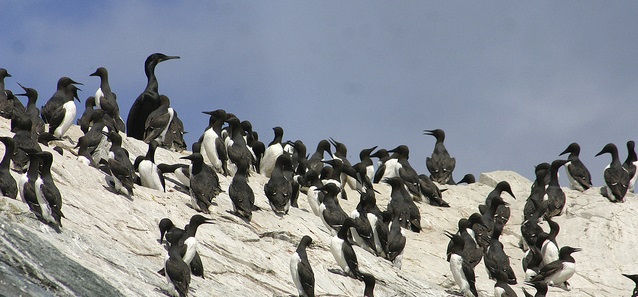Seabird Protection Network 
Point Sur – Point Mugu Chapter

About the Seabird Protection Network
On September 28, 1997, crude oil discharged from a rupture in a 20-inch pipeline owned and operated by Torch Operating Company, Nuevo Energy Company, and Black Hawk Oil & Gas Company. The pipeline extended from Platform Irene, an offshore oil platform, to an onshore processing facility on Harris Grade Road, north of the City of Lompoc in Santa Barbara County, California.
The Torch / Platform Irene Oil Spill released at least 163 barrels (6,846 gallons) of petroleum products into the Pacific Ocean. Subsequently, oil contaminated 17 miles of northern Santa Barbara County coastline and damaged a variety of natural resources including mussels, abalone, seabirds (notably Common Murres and Brandt's Cormorants), shorebirds, and shoreline and intertidal habitats.
The Torch Spill Trustee Council prepared a Final Restoration Plan and Environmental Assessment (RP/EA, October 24, 2007) which included restoration programs to compensate for natural resource losses due to the Spill. One of the programs selected by the Trustee Council was the Seabird Protection Network Program, to protect seabirds by reducing human disturbance of nesting and roosting colonies. Building on the accomplishments of the Pt. Reyes to Pt. Mugu Seabird Protection Network was formed to address the restoration project.
The Seabird Protection Network - Pt. Sur to Pt. Mugu aims to improve the nesting success and survival of 6 target seabird species. The target species are seabirds that nest and roost on the surface of cliffs or offshore rocks including Pelagic Cormorants, Brandt's Cormorants, Brown Pelicans, Western Gulls, Black Oystercatcher and Pigeon Guillemots. These species are easily disturbed and adversely impacted by human-related activities.
The Seabird Protection Network addresses human disturbance to breeding seabird colonies along the California Coast. These efforts are accomplished through an organized outreach and education program combined with law enforcement and other seabird management actions. Data from the monitoring of California seabird breeding colonies helps guide outreach, education, and management efforts.
Monitoring and surveillance of seabird colonies is conducted during the breeding season when impacts to seabirds can be the greatest and most severe. Data from the monitoring can help identify human disturbance issues — information critical for determining local and regional outreach and enforcement efforts for the Network.
For more information: California Coastal National Monument. To learn about the coordination activities for the Seabird Protection Network from Pt. Sur to Pt. Mugu click here. For more information about the Seabird Protection Network from Pt. Reyes to Pt. Sur click here.
To learn more about seabirds visit the Coastal Discovery Center at San Simeon Bay, part of the Monterey Bay NMS.
